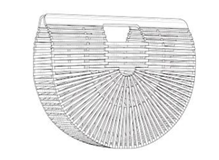The US Court of Appeals for the Second Circuit affirmed the dismissal of a lawsuit that sought a declaratory judgment on the basis that a notice of termination of copyright assignment under 17 U.S.C. § 203 did not validly terminate a 1983 grant of rights in the copyright. Valentina M. Peretti Acuti, et al. v. Authentic Brands Group, LLC, et al., Case No. 21-2174 (2d Cir. May 4, 2022) (Livingston, C.J.; Lynch, Lohier, JJ.)
Hugo Peretti co-wrote “Can’t Help Falling in Love,” a ballad popularized by Elvis Presley in 1961, and registered the composition with the US Copyright Office the same year. In 1983, Peretti, his wife and his daughters transferred their contingent rights and interest in the renewal term of the copyright to Julian and Jean Aberbach, predecessors-in-interest to Authentic Brands. Under the Copyright Act of 1976 (1976 Act), the renewal rights would not vest until the original term of the copyright expired in 1989 (28 years after the copyright was registered, under the Copyright Act of 1909, which applied to the initial term of the copyright because of its registration in 1961). Peretti died in 1986, before the renewal rights vested. His family registered the renewal of the copyright in 1989.
In 2014, Peretti’s widow and his daughter Valentina served a notice on Authentic Brands to terminate the 1983 assignment under 17 U.S.C. § 203. Section 203 provides for the right to terminate a grant executed by the author at any time during a five-year period beginning at the end of 35 years from the date of execution of the grant. Authentic Brands contested the effectiveness of the termination, and Valentina filed a lawsuit seeking a declaratory judgment that the termination was properly effectuated. The district court dismissed the claim, holding that Valentina had no right to terminate the assignment because the rights to the renewal term that were transferred were those of Valentina and her mother, which had vested upon expiration of the original copyright term. The district court held that § 203 provides termination rights only to post-1978 grants executed by an author and, therefore, Peretti’s widow and daughter’s rights to the renewal were not subject to termination under that provision. Valentina appealed.
The Second Circuit began with a discussion of § 203 of the Copyright Act, which applies only to grants executed by the author on or after January 1, 1978. The Court noted that the appeal hinged on the meaning of “executed by the author.” The 1976 Act provides that execution of a transfer of a copyright is not valid unless an instrument of conveyance is in writing and signed by the owner of the rights conveyed. Thus, as the Second Circuit explained, a grant “executed by the author” is a grant that is documented in writing, is signed by the author and conveys rights owned by the author.
Turning to the Peretti 1983 assignment, the Second Circuit explained that at the time the assignment was executed, ownership of the copyright in the composition [...]
Continue Reading
read more

 Subscribe
Subscribe



